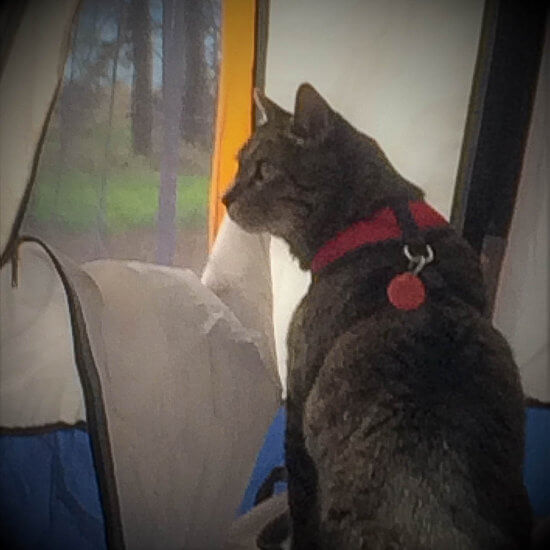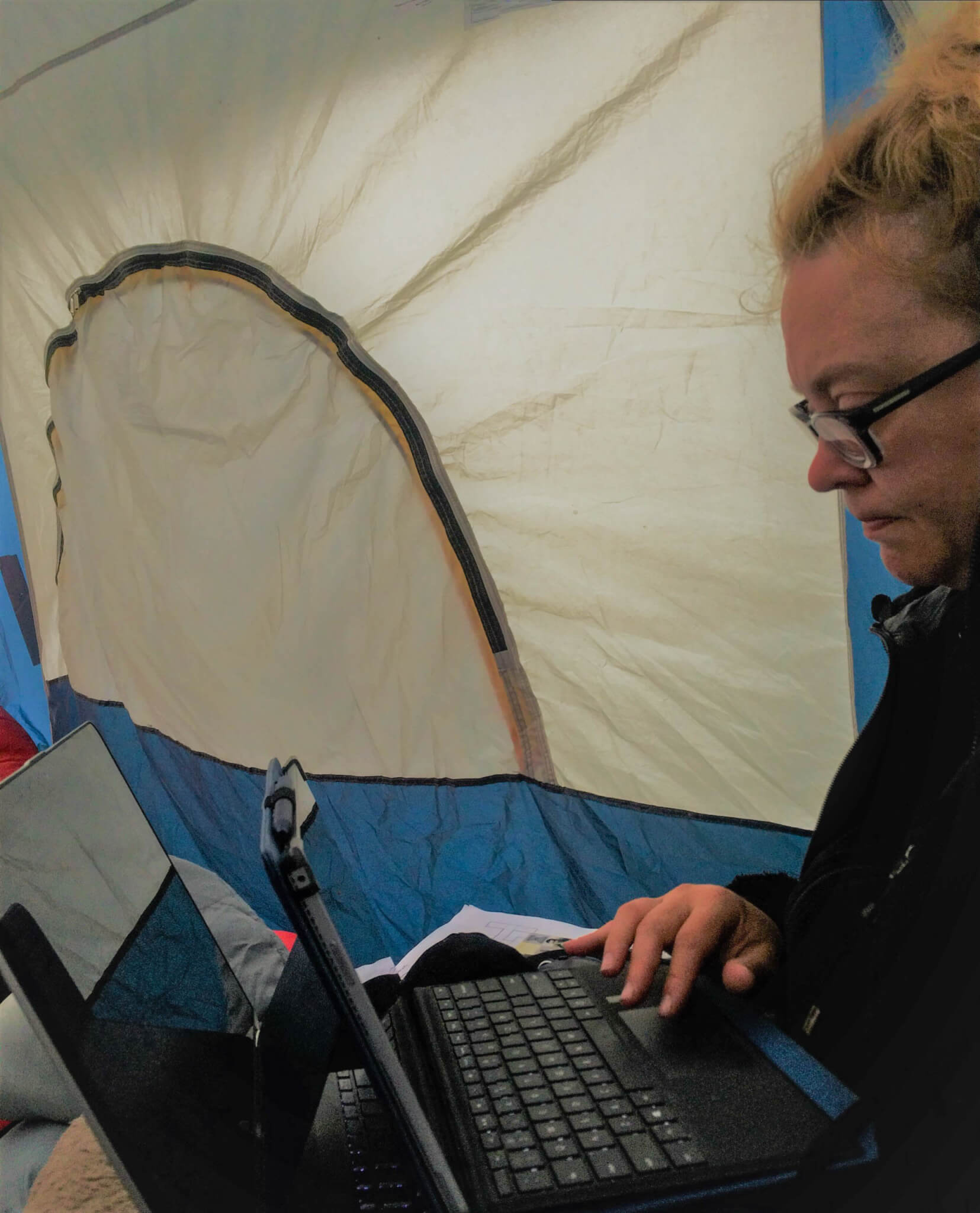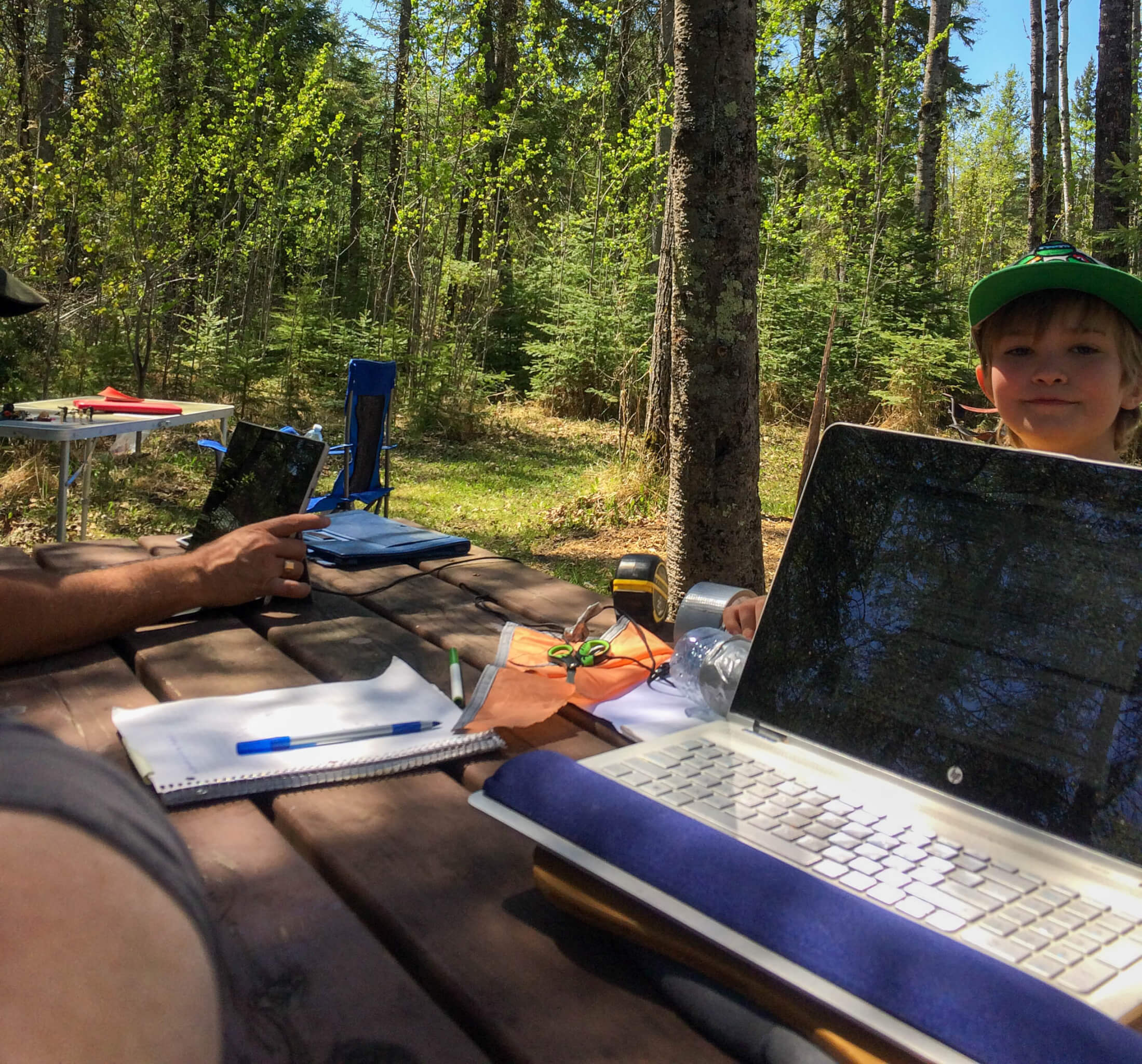Distance learning on the go
An Athabasca University grad earned her Master of Science in Information Systems while moving with her family from coast to coast
Completing a graduate degree has been quite a journey for Uilani Ballay… literally!
“It’s just been a weird and winding road, this whole journey, and a little bit unconventional,” said Ballay (Master of Science in Information Systems ’23).
At 1 point early in her studies at Athabasca University (AU), she was completing assignments and collaborating with classmates via the Wi-Fi connections at campgrounds. She spent 2 and a half months completing assignments on the road while moving from Victoria, B.C. to Cape Breton, N.S.—tenting with a family of 3 plus their cat, Bubba.
This meant dealing with the elements, including weathering an April snowstorm in the British Columbia interior, contending with rattlesnakes in southern Alberta, and keeping her head above water during torrential downpours in Quebec.
“When we could no longer afford to live in Victoria, we had to find somewhere in Canada that better suited our needs, and we ended up in Nova Scotia,” Ballay said.
Life of a grad student on the road

A typical day on this trip involved waking up around 6 a.m. and studying for a few hours with birds as a soundtrack, then setting up the camp for the day. Ballay would then create a lesson plan for her son, and a homework plan for herself.
There was always time to hike and explore, an important part of Science, Technology, Engineering, and Math (STEM) education for both, with a cellphone and laptop nearby so she could check in on her work as an IT consultant as needed.
They would study more in the afternoon, all pitch in on supper and chores, then she would get back to studying or remote working—sometimes both—while her son played, and her husband took care of the rest.
“My husband did all the driving, grocery shopping, and laundromat visits, while I taught, worked, and studied,” she said. “We had a good system going as a team!”
This isn’t the most conventional way for someone to earn a master’s degree in a computer science field, but then again, Ballay was well prepared. She had her first experiences of both programming and of distance education at 10 years old on a Tandy TRS-80 computer.
Early computer science education
Ballay was born in Hawaii, where her father worked as an astronomer at University of Hawaii’s 1st observatory on Mauna Kea. She said being surrounded by scientific gadgets, astronomy journals, and electronic equipment had a big influence on her.
“My dad got me my first computer when I was 10, back when we still used floppy disks,” she said. “I started out programming a Pong-style game.”
The family later moved to Canada, and Ballay had a pen pal tutor in Oregon who would send her cassette tapes with instructions on how to code. She would record the code, then send the tapes back via the mail service.
This process was not unlike the mail-based distance-education provided in AU’s early days. Course materials would be sent by mail, including audio recordings of lectures.
“I guess that was the beginning of my remote learning! Now look at me, with a master’s degree through remote learning, decades later,” Ballay said.
A career in IT
While Ballay always had an aptitude for and an interest in STEM topics, and has spent the past 20 years working in IT support, she never had any formal computer science training before completing her degree at AU.
After completing a bachelor of science in psychology, she had several different careers before she got into IT management. The bulk of her work, which she does remotely, is accounting and IT management for accounting firms.
She had been working with some accountants who were having trouble with the technology side of their businesses, and she took on the task of getting everything working.
“That was all trial by fire,” Ballay said. “I figured out how to do things, 1 thing led to the next, and here I am.”
When she first considered a master’s program, she hadn’t necessarily considered computer science, but she liked that she could complete her degree online with AU and decided to give it a shot.

STEM student, STEM teacher
While studying and working, Ballay also had another important role: homeschool teacher to her son Thurston, 12.
“While I was teaching him, I was very much trying to be a mentor and lead by example,” she said. “STEM has turned out to be 1 of his favourite things.”
After seeing her working in a STEM field, and studying in a STEM field, he likewise has developed a passion for it. In fact, she said he’s the better computer programmer—something that makes her immensely proud.
“I think there’s a big misconception out there about it being difficult to get into STEM, that it’s hard or only nerdy little guys can do it. But anybody can, you just you just need the right inspiration or the right mentor,” she said. “It feels great to be able to influence kids in that way.”

An interdisciplinary computer science project
Ballay chose the project route for her degree, rather than the thesis or essay route. Working with “an exceptional supervisor” within the Faculty of Science and Technology, Dr. Jon Dron, she was able to structure her project in a way that brought her own personal interests to the forefront.
She has always been interested in natural medicine and alternative healing, and before taking her degree had always wanted to create a book on the topic. With the information systems education she had in the first part of her degree, she was able to build a database compiling reports of interactions between different drugs, herbs, and vitamins in the context of treating and preventing COVID-19.
“That was an area that was unexplored when I started my project,” she said. “Nothing was known, so I thought this would be a novel research area.”
Ballay described the work as both very interesting and gruelling—and valuable. She intends to continue using what she has learned to build databases that could be useful for health practitioners.
If you have a drive to learn, a computer, and Wi-Fi, you’re good to go. Uilani Ballay
Doctoral aspirations
With a master’s degree under her belt, Ballay is already considering the next steps in her educational journey.
She’s currently looking at options for PhD programs that will allow her to work with computers in interdisciplinary ways, and in a way that allows her to bring her full experience to bear.
“Most of them are at an intersection between psychology and computer science,” she said. “It’s so interesting that both of my degrees ended up bringing me to this point.”
That said, she is still holding out hope for a program that will allow her to combine her expertise in computer science and her personal interests in digital transformation of plant medicine, ethnobotany, psychology, art, gaming, and STEM.
But for prospective students who are now considering taking the next step in their own educational journey, Ballay has words of encouragement: “If you have a drive to learn, a computer, and Wi-Fi, you’re good to go.”